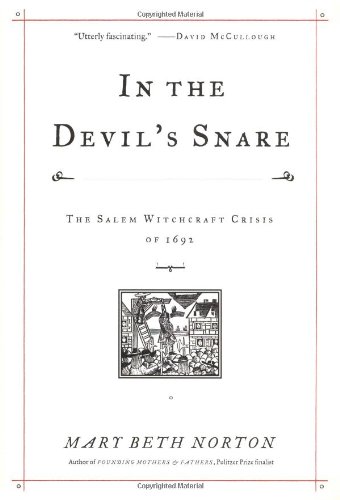
In the Devil's Snare
The Salem Witchcraft Crisis of 1692
کتاب های مرتبط
- اطلاعات
- نقد و بررسی
- دیدگاه کاربران
نقد و بررسی

Starred review from July 1, 2002
In her splendid re-creation of the notorious events of 1692, Cornell historian Norton (her Founding Mothers and Fathers
was a Pulitzer finalist) offers fresh and provocative insights into the much-studied Salem witchcraft trials. Using newly available materials from the trial records, letters and diaries, she argues that a complex of political, military and religious factors led to the outbreak of hysterical fits and other behavior that ended in the infamous trials. As Norton ably demonstrates, the settlers saw the First and Second Indian Wars and their resulting loss of prosperity as God's punishment for their sins. In April 1692, as these losses mounted, several teenage girls began having fits that they attributed to the devil, to witches and to Indians. The colonists thus found themselves, says Norton, being punished both by visible spirits (Indians) and invisible ones (the devil). In an unusual turn of events that Norton explores, the magistrates of the village took the testimony of these women—who normally were not given any political or judicial authority—at face value and began the trials. Moreover, as Norton shows, some judges used this opportunity of blaming witches to assuage their own guilt over their responsibility for political, economic and military mismanagement. Part of the originality of this study lies in Norton's refusal to read events through the lens of contemporary psychology, offering instead a lively account of the ways 17th-century men and women would have thought about them. Very simply, Norton's book is a first-rate narrative history of one of America's more sordid yet ever-fascinating tales.

























دیدگاه کاربران